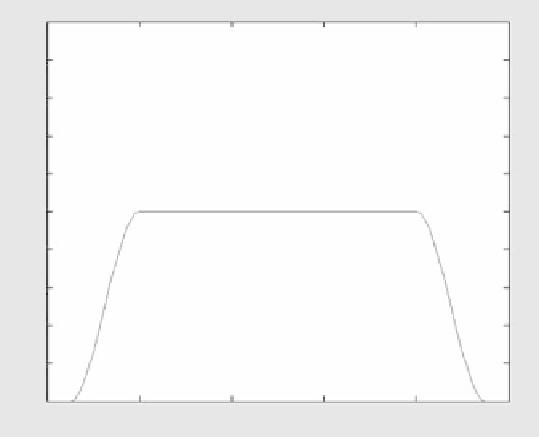Biomedical Engineering Reference
In-Depth Information
0.5
0.45
0.4
0.35
0.3
0.25
0.2
0.15
0.1
0.05
0
0
dmin
d1
d2
dmax
Figure 15.
Function
h
used as a prior constraint:
d
min
= minimum distance allowed;
d
max
= maximum distance allowed.
See attached CD for color version.
2. It rewards a directional edge, which is another strategy to overcome noise.
3. It has the constraint condition, an effective method for approximately mod-
eling the constant thickness of the cortical layer.
5.2.3. Integrate region and boundary information
In the previous two subsections we independently developed region and bound-
ary forces that propagate the surface to the WM/GM boundary. In theory, both
are supposed to converge in the correct position. In practice, however, neither
performs well enough because the image data are usually corrupted by noise and
RF inhomogeneties. While the region-propagated surface evolves correctly in a
global sense, it tends to leak out of weak boundaries. Contrarily, the boundary-
propagated surface can localize accurately, but evolves slowly due to its limited
capture range. This observation implies that the region and boundary forces can
be complementary, thus motivating us to unify them in order to arrive at a robust
as well as accurate result.
There have been many attempts at unifying region and boundary information
[53, 55, 100]. In this section we employ region information as global criteria and
boundary information as a local stopping term. We obtain the following unified
evolving equation:

